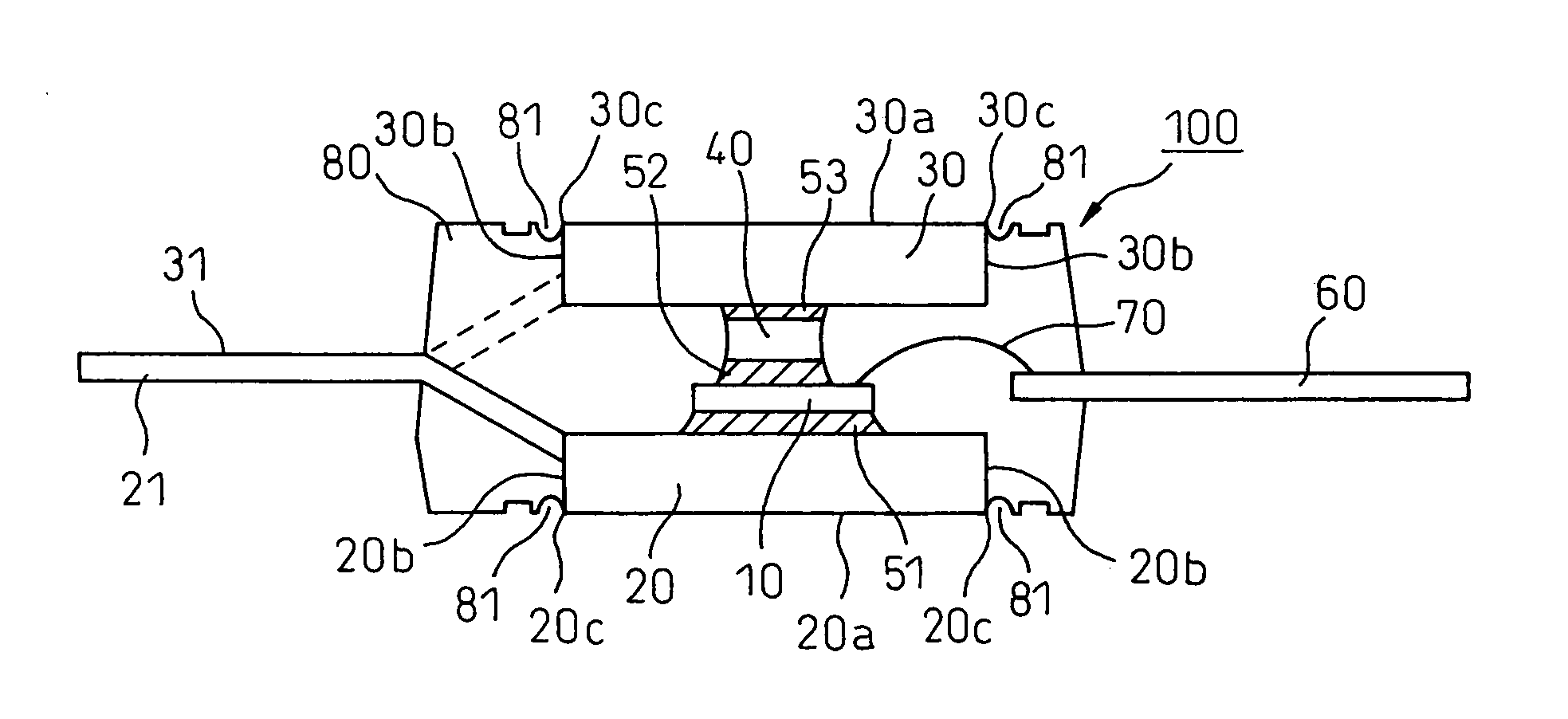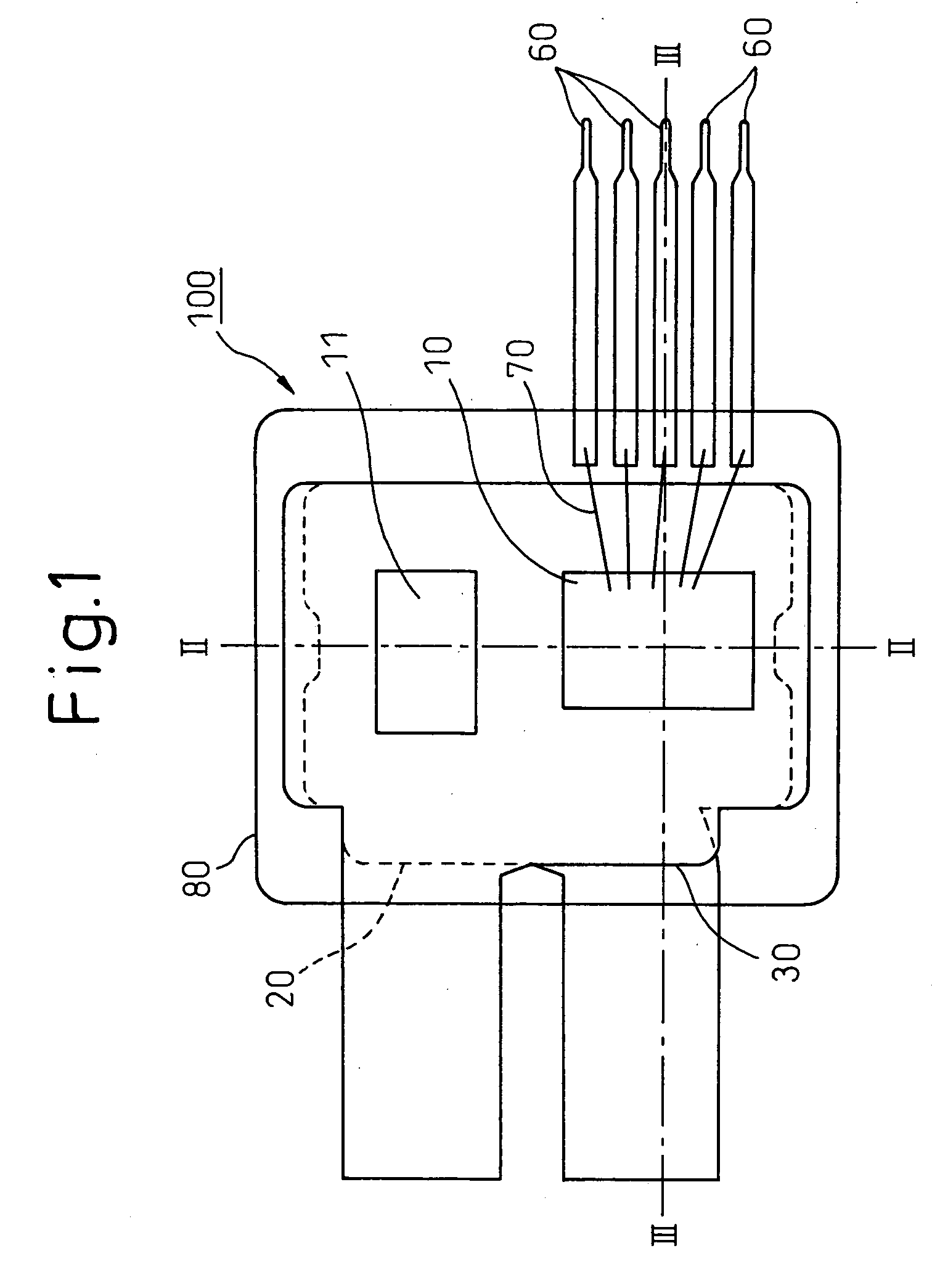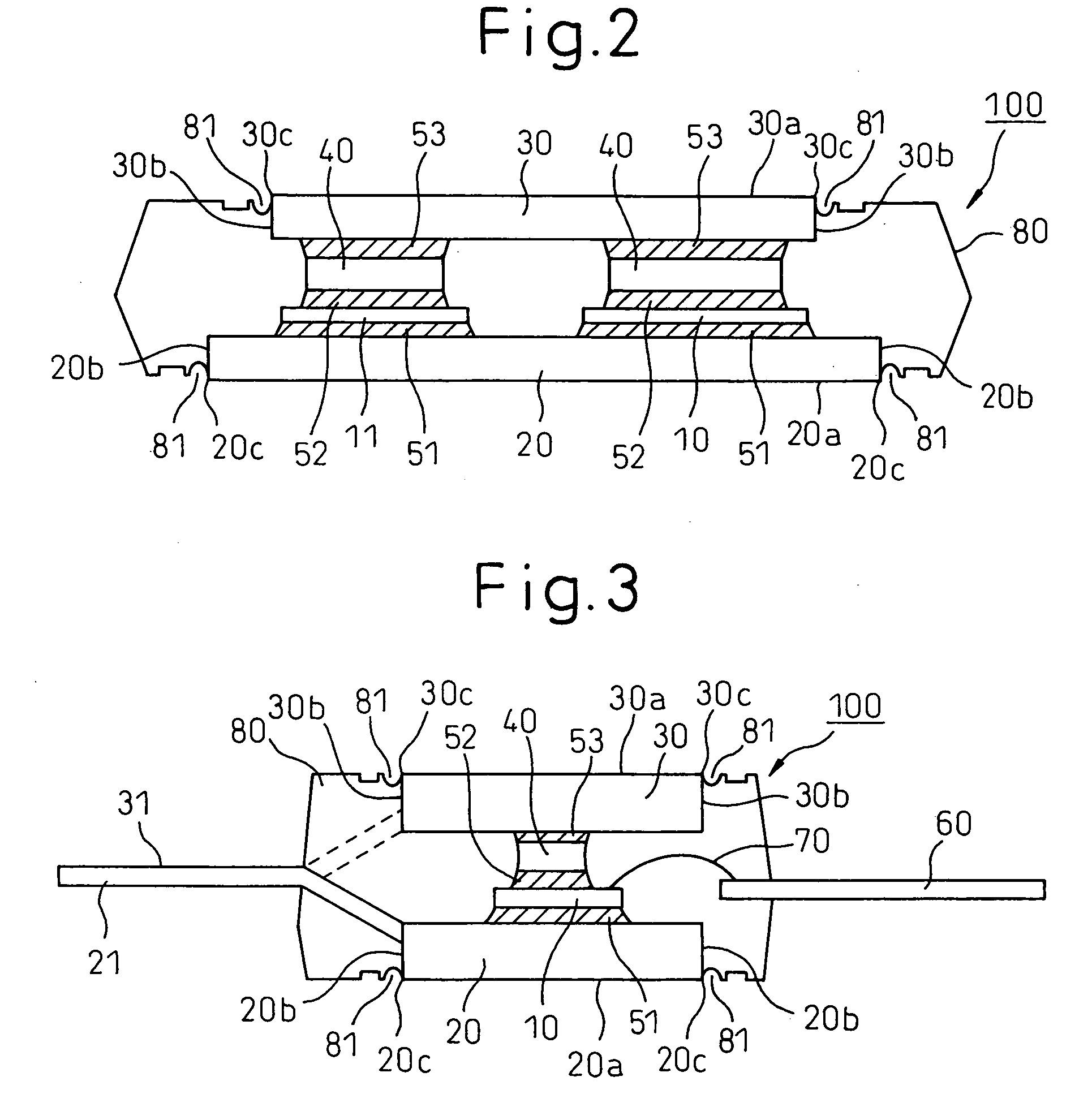Semiconductor device, method and apparatus for fabricating the same
- Summary
- Abstract
- Description
- Claims
- Application Information
AI Technical Summary
Benefits of technology
Problems solved by technology
Method used
Image
Examples
Embodiment Construction
[0071] Embodiments of the invention are described below with reference to the drawings. In the drawings, the identical or equivalent parts are designated by the same reference numerals, respectively, to simplify the explanation.
[0072]FIG. 1 is a plan view schematically showing a semiconductor device 100 according to an embodiment of the invention. FIG. 2 is a diagram schematically showing a sectional structure taken in one-dot chain II-II in FIG. 1, and FIG. 3 a diagram schematically showing a sectional structure taken in one-dot chain III-III in FIG. 1.
[0073] In FIG. 1, a molded resin 80 is shown only as an outline thereof, and the planar arrangement of the parts located in the molded resin 80 is shown in a perspective drawing.
[0074] As shown in FIGS. 1 to 3, the semiconductor device 100 according to this embodiment includes semiconductor chips 10, 11 constituting semiconductor elements, and a pair of heat sinks 20, 30 formed with a pair of radiator plates arranged on the two su...
PUM
 Login to View More
Login to View More Abstract
Description
Claims
Application Information
 Login to View More
Login to View More - Generate Ideas
- Intellectual Property
- Life Sciences
- Materials
- Tech Scout
- Unparalleled Data Quality
- Higher Quality Content
- 60% Fewer Hallucinations
Browse by: Latest US Patents, China's latest patents, Technical Efficacy Thesaurus, Application Domain, Technology Topic, Popular Technical Reports.
© 2025 PatSnap. All rights reserved.Legal|Privacy policy|Modern Slavery Act Transparency Statement|Sitemap|About US| Contact US: help@patsnap.com



